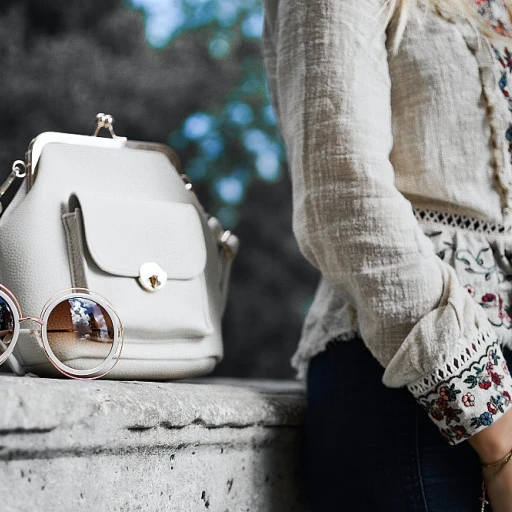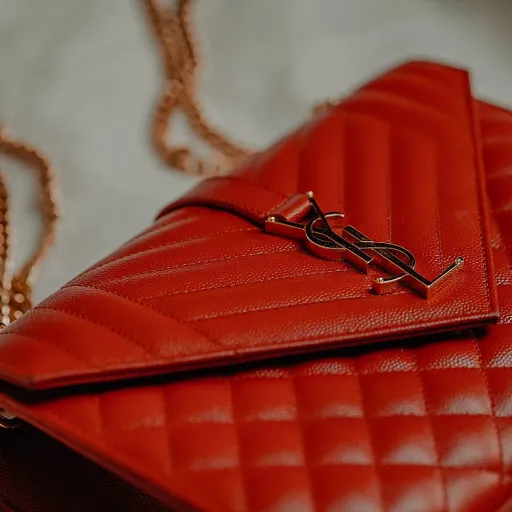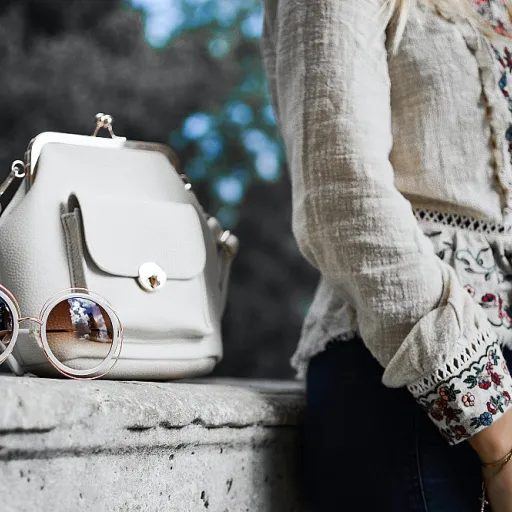Understanding why necklaces tangle
Why Do Necklaces Always Seem to Tangle?
Every jewelry lover knows the frustration of pulling out a favorite necklace, only to find it hopelessly tangled. Whether it’s a delicate chain or a bold statement piece, knots can form in seconds, leaving you searching for tips to help untangle your jewelry. But why do necklaces tangle so easily, and what can you do to prevent it?
- Chain design and material: Fine chains, especially those with small links, are more likely to twist and knot. Lightweight materials and intricate designs can make tangling even more common.
- Storage habits: Tossing necklaces into a jewelry box or drawer without separating them is a recipe for knots. Chains grab onto each other, and movement during storage leads to tangling.
- Movement and friction: Wearing multiple necklaces at once, or storing them together, increases friction. This causes the chains to wrap around each other, forming stubborn knots.
- Environmental factors: Humidity and static electricity can make chains stick together, while oils from your skin or products like baby oil or olive oil can cause links to slip and tangle.
Understanding these causes is the first step guide to keeping your necklaces tangle-free. If you’re dealing with a particularly stubborn knot, don’t worry—there are effective ways to help loosen and untangle necklace chains, which we’ll cover soon. For those who love unique jewelry, check out this guide to must-have Larimar earrings for more inspiration on caring for your collection.
Knowing why tangling happens will help you choose the right tools and techniques, from using a straight pin or baby powder to applying a touch of oil. With a little patience and the right approach, you can keep your necklaces looking beautiful and ready to wear every time you open your jewelry box.
Choosing the right tools for untangling
Essential Tools for Effortless Necklace Untangling
Before you start working on those stubborn knots, having the right tools at hand will make the process smoother and less stressful. Many tangled necklaces can be saved with a few simple items you likely already have at home. Here are some tips and tools that can help loosen even the tightest knots:
- Straight pins or sewing needles: These are perfect for gently teasing apart tiny knots in delicate chains. Always use them with care to avoid scratching your jewelry.
- Baby powder: Sprinkle a little powder on the knot. It helps reduce friction, making it easier for the chains to slide apart. This powder tangled trick is especially useful for fine, thin necklaces.
- Baby oil or olive oil: Apply baby oil or a drop of olive oil to the knot using a cotton swab. The oil will help loosen the knot, but remember to clean your necklace afterward to remove any residue.
- Soft cloth or towel: Lay your necklace flat on a soft surface to prevent further tangling and to keep your jewelry safe while you work.
- Magnifying glass: If your necklace has very fine chains, a magnifying glass can help you see the knots more clearly and work with precision.
Using these tools, you can untangle necklace chains without causing damage. Take your time and be patient—rushing can make knots grab tighter or even break delicate links. If you’re working with statement pieces or heirloom jewelry, extra care is essential to prevent damage.
For more inspiration on caring for your jewelry and elevating your look, check out this guide on elegant pearl earrings for bridal style. These tips will help you keep your jewelry box organized and your favorite pieces ready to wear, whether you’re heading out for a special event or just want to prevent tangling in your daily routine.
Step-by-step guide to untangling a necklace
Step-by-step: How to rescue your tangled necklace
If you’ve ever opened your jewelry box to find your favorite necklace in a stubborn knot, you’re not alone. Tangled necklaces are a common frustration, but with a little patience and the right approach, you can untangle necklace chains without damaging them. Here’s a step guide to help you tackle those tricky knots and restore your jewelry’s shine.- Lay your necklace flat on a clean, smooth surface. This prevents further tangling and gives you a clear view of the knots.
- Apply baby powder or a drop of baby oil or olive oil directly onto the knot. These substances help loosen the tightness, making it easier for the chains to slide apart. If you use oil, be sure to clean the necklace afterward with a gentle jewelry cleaner.
- Use a straight pin or sewing needle to gently tease apart the knot. Insert the pin into the center of the knot and wiggle it to help loosen the chains. Take your time—rushing can cause damage, especially to delicate or statement pieces.
- If the knot is especially stubborn, add a bit more powder or oil and continue working with the pin. Sometimes, letting the necklace sit for a few minutes after applying baby powder or oil can help loosen the knot further.
- Once the knot is free, wipe off any excess powder or oil with a soft cloth. This step is important to prevent residue from building up and to keep your jewelry looking its best.
Preventing future tangles in your jewelry box
Smart Storage Solutions for Tangle-Free Necklaces
Keeping your necklaces tangle-free starts with how you store them. A cluttered jewelry box is a recipe for knots and frustration. To prevent tangling, consider these practical tips:
- Hang necklaces individually on hooks or a jewelry stand. This stops chains from overlapping and forming knots.
- Use a compartmentalized jewelry box with separate sections for each necklace. This keeps delicate chains apart and reduces friction.
- Store each necklace in a small zip bag, leaving the clasp outside. This simple trick helps prevent chains from tangling inside the bag.
- Lay necklaces flat in a drawer lined with soft fabric. Make sure each piece is spaced out to avoid contact.
For travel, thread your necklace through a straw or wrap it in a soft cloth before placing it in your bag. This keeps the chain straight and protected from knots. If you have statement pieces or delicate chains, take extra care to separate them from chunkier jewelry to avoid damage and tangling.
Extra Tips to Prevent Frustrating Knots
- Always clasp your necklaces before storing them. This simple habit helps keep the chain in a closed loop, making tangling less likely.
- Apply a little baby powder to tangled necklaces before storing if you notice any tight knots. The powder can help loosen the chain and prevent further tangling.
- Rotate your jewelry regularly. Wearing the same necklace for days can cause oils and dirt to build up, which may contribute to knots grabbing onto the chain.
Remember, a little organization goes a long way. Investing time in proper storage will save you the hassle of untangling necklaces and help keep your favorite pieces looking beautiful for years to come.
Caring for delicate and statement pieces
How to Handle and Store Your Most Precious Pieces
Caring for both delicate and statement necklaces is essential if you want to keep them looking beautiful and tangle-free. Whether your jewelry is made of fine chains or bold, chunky links, a few simple tips can help preserve their shine and prevent frustrating knots.- Always lay your necklace flat on a soft surface when not wearing it. This helps prevent unnecessary tangling and keeps the chain from developing kinks.
- Use a jewelry box with separate compartments for each piece. This is especially important for delicate chains, which can easily get tangled with other necklaces or pins. If your jewelry box doesn’t have dividers, consider using small pouches or even resealable bags for each necklace.
- Apply baby powder or a tiny drop of baby oil to help loosen stubborn knots if they do occur. Gently work the powder or oil into the knot using a straight pin or a fine needle. This method is especially helpful for delicate chains, as it reduces friction and makes it easier to untangle necklace knots without damaging the metal.
- Keep your jewelry away from moisture and direct sunlight. Humidity can cause metals to tarnish and make knots grab onto themselves even tighter. Store your necklaces in a cool, dry place to help prevent tangling and preserve their finish over time.
- Handle statement pieces with care. Larger, heavier necklaces can be more prone to knots and tangling due to their weight. Always clasp them before storing and avoid piling them with other jewelry.
For information about how we handle your data, please see our privacy policy.
When to seek professional help for your jewelry
Recognizing When DIY Isn’t Enough
Sometimes, even with all the tips and tricks—like using baby oil, olive oil, or a straight pin to help loosen knots—your necklace just won’t budge. If you’ve tried laying your necklace flat, applying baby powder, or gently working with pins, and the knot remains stubborn, it might be time to consider professional help. For delicate chains, vintage pieces, or necklaces with intricate settings, forcing the knot can cause permanent damage.Why Professional Jewelers Are Worth Considering
A reputable jewelry store has specialized tools and expertise to untangle necklaces without harming the metal or stones. Jewelers can also inspect for hidden damage, like weakened links or clasps, that may have occurred during tangling. This is especially important for statement pieces or heirloom jewelry, where the risk of breakage is higher.- If your necklace is made of fine chains or features tiny, delicate links, a jeweler’s touch can prevent breakage.
- When knots grab onto multiple chains or the tangle is too tight for pins or powder to help, professional intervention is safer.
- For pieces with sentimental or high monetary value, don’t risk DIY methods that could void warranties or cause irreparable harm.
What to Expect at the Jewelry Store
Most jewelers offer untangling as a service, sometimes for a small fee. Bring your tangled necklaces and explain what you’ve already tried. They may use ultrasonic cleaners, specialized tools, or lubricants designed for jewelry. If repairs are needed, they can advise on the best course of action to restore your piece.Tips for Choosing the Right Professional
- Look for jewelers with strong reputations and positive reviews.
- Ask about their experience with untangling and repairing delicate necklaces.
- Check their privacy policy if you’re leaving valuable jewelry for service.












